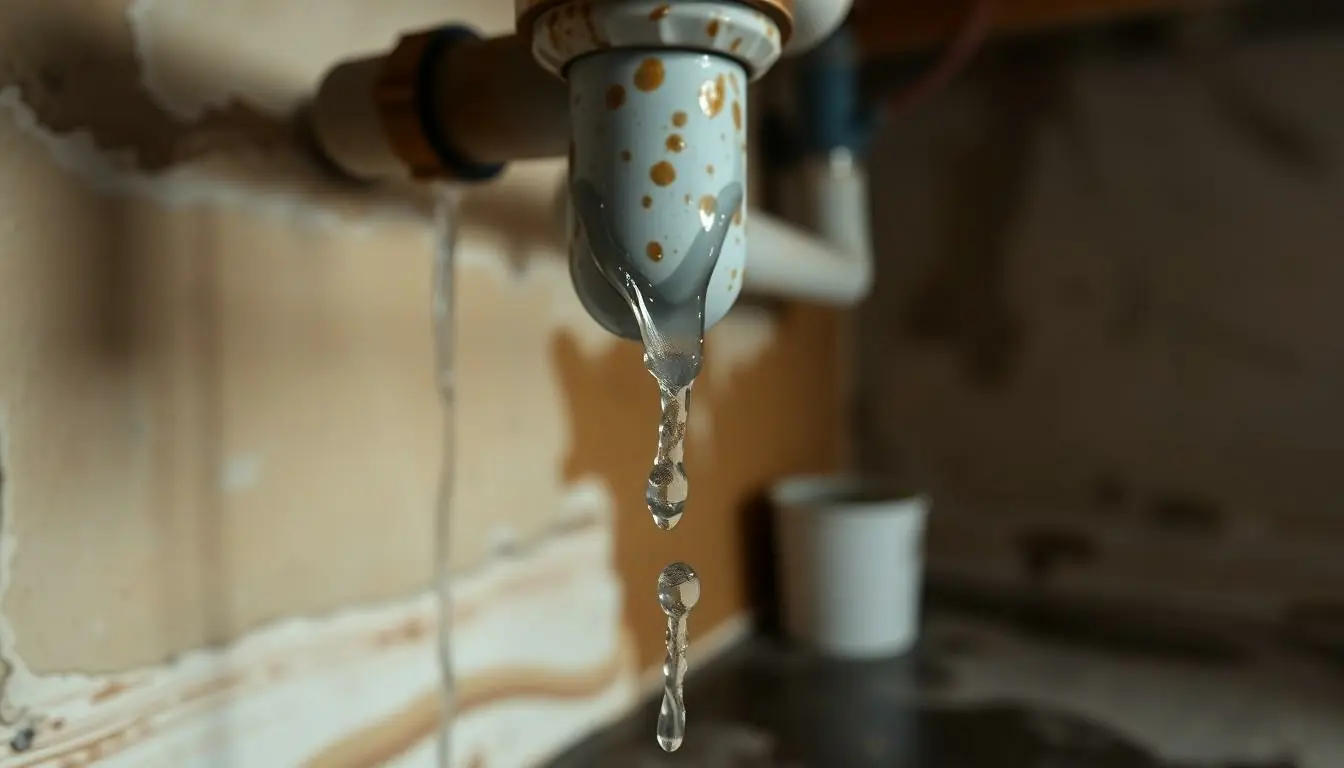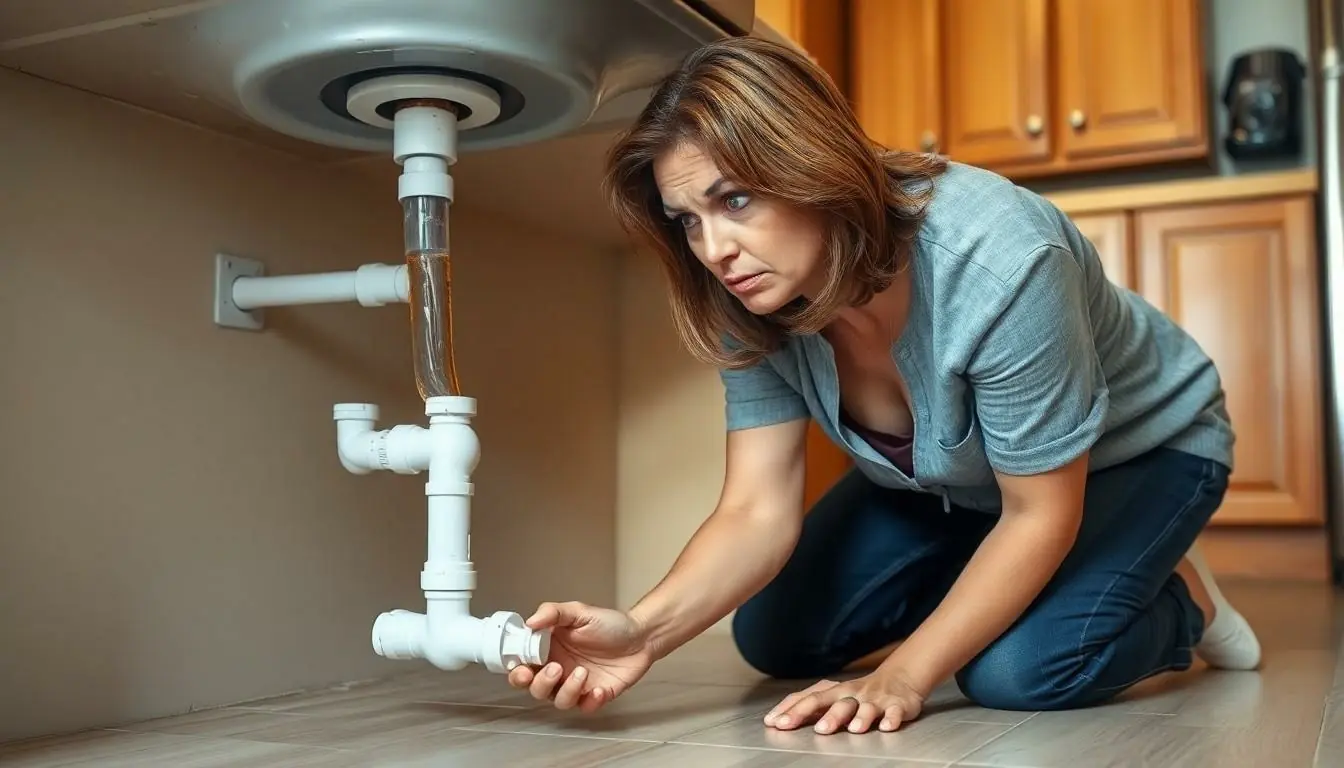Picture this: a cozy evening at home, a cup of tea in hand, when suddenly, the sound of gushing water disrupts the peace. Panic sets in as the realization hits—your pipes have decided to throw a tantrum. Now, the big question looms: does homeowners insurance cover pipe replacement?
Navigating the world of homeowners insurance can feel like deciphering ancient hieroglyphics, but understanding what’s covered can save homeowners from a financial flood. While some policies might just cover the aftermath of a pipe disaster, others could help with the pipe replacement itself. Let’s dive into the murky waters of homeowners insurance and find out if it’s got your back when those pipes decide to take an unexpected vacation.
Table of Contents
ToggleUnderstanding Homeowners Insurance
Homeowners insurance provides financial protection against various risks associated with homeownership, including damage to the structure and personal property. Specific coverage details vary by policy, so reading the fine print is crucial. It typically includes liability coverage, dwelling coverage, and personal property coverage.
Dwelling coverage protects against damage to the home’s structure due to perils like fire, theft, or vandalism. Personal property coverage helps rebuild or replace personal belongings, such as furniture or appliances, following a covered incident. Liability coverage protects the homeowner against legal claims, offering peace of mind in case of injury.
However, not all policies include coverage for specific situations like pipe replacement. Water damage due to sudden, unexpected incidents often qualifies for coverage under standard policies. For instance, burst pipes that result in flooding may commonly fall under this protection. Nevertheless, damage resulting from wear and tear typically does not receive coverage.
Various endorsements or riders may enhance protection for specific issues, allowing for broader coverage against pipe-related damages. Homeowners facing issues with older plumbing systems might benefit from additional coverage options. Assessing existing policies and understanding exclusions can help avoid unexpected costs during emergencies.
Reviewing the exact terms of the policy is essential for clarity. Policyholders should confirm coverage with their insurance agents to avoid misunderstandings. Knowledge of what is included and excluded can significantly influence financial repercussions following plumbing incidents.
What Does Homeowners Insurance Typically Cover?

Homeowners insurance provides financial protection against various risks that can affect a home. Understanding specific coverage areas offers clarity on whether pipe replacement is included.
Structural Damage
Structural damage encompasses issues affecting the home’s physical framework. It usually covers damage to the roof, walls, and foundation caused by sudden incidents like burst pipes. Policies generally define coverage limits, so reviewing terms ensures awareness of what is included. Notably, damage due to neglect or wear and tear typically falls outside the protection umbrella. Homeowners can request endorsements to extend coverage for older plumbing systems that may require greater attention.
Personal Property
Personal property coverage protects belongings within the home from unexpected events. This category includes furniture, electronics, and clothing, which may be damaged due to water leaks from broken pipes. It’s common for policies to specify certain limits on high-value items. Additional coverage might be necessary for expensive items not fully protected under standard policies. Reviewing the contents of personal property ensures homeowners understand what is covered and avoid financial setbacks due to damages.
The Importance of Plumbing Coverage
Understanding plumbing coverage within homeowners insurance is crucial for homeowners. This coverage helps protect against costly repairs and replacements caused by sudden incidents, such as burst pipes or severe leaks. Homeowners can face significant financial burdens without adequate plumbing coverage, especially in older homes where plumbing systems may be more vulnerable.
Specific incidents often lead to major water damage, impacting both the structural integrity of a house and personal belongings. Addressing these risks with sufficient coverage prevents unexpected expenses from severely affecting household finances. Regular policy reviews ensure that homeowners are aware of their coverage limits and exclusions.
Reviewing specific policy terms highlights key differences in coverage. Many policies protect against water damage resulting from unexpected incidents, while damage due to lack of maintenance or gradual wear may not receive coverage. Homeowners can mitigate risks by considering endorsements or riders tailored to plumbing issues, particularly relevant in older homes with aging infrastructure.
Assessing personal property coverage is equally important. Water leaks from broken pipes can damage valuable items, leading to financial loss. Knowing the limits on high-value items and considering additional coverage can safeguard possessions adequately.
Consulting with insurance agents fosters clarity about individual policies. They can help clarify any ambiguities regarding plumbing-related claims. Fostering this understanding helps homeowners avoid unpleasant surprises during a plumbing emergency.
Does Homeowners Insurance Cover Pipe Replacement?
Homeowners insurance may cover pipe replacement in certain scenarios. Understanding the details of coverage can alleviate confusion during emergencies.
Situations Where Coverage Applies
Water damage caused by sudden and accidental events often qualifies for coverage. A burst pipe filled with water can lead to extensive damage, and many policies provide protection for repairs. Additionally, homeowners may receive compensation for damage to personal property caused by leaking pipes. Immediate reporting of the incident to the insurance company is crucial for a smooth claims process. Policies may even offer coverage for alternative living arrangements if a home becomes uninhabitable due to plumbing issues.
Situations Where Coverage Does Not Apply
Homeowners insurance typically excludes damages from routine wear and tear. For example, slow leaks that develop over time may not qualify for coverage. Homeowners should also note that insurance generally does not cover plumbing issues caused by lack of maintenance. Damage due to negligence or failure to repair existing issues falls outside most policies. Additionally, flooding from outside sources typically requires separate flood insurance. Combining these factors highlights the need for regular plumbing inspections and prompt maintenance to prevent costly surprises.
Additional Coverage Options
Homeowners can explore additional coverage options that enhance protection for plumbing issues. Endorsements and riders often provide crucial support for specific scenarios.
Endorsements and Riders
Endorsements allow homeowners to tailor their insurance coverage. For plumbing, these add-ons enhance protection beyond the standard policy. Homeowners with aging pipes may find riders beneficial, covering issues like sudden leaks or damage due to system failures. Reviewing endorsements provides clarity on what’s included and excluded. Customizing coverage ensures it meets individual needs effectively.
Home Warranty Plans
Home warranty plans offer another layer of protection. These plans typically cover repairs and replacements for major home systems, including plumbing. Homeowners facing unexpected breakdowns benefit significantly from these warranties. Coverage ranges from pipe repairs to full system replacements, helping manage costs. Comparing various plans helps identify the most suitable option for specific plumbing needs.
Understanding homeowners insurance coverage for pipe replacement is crucial for protecting against unexpected plumbing emergencies. While policies often cover damage from sudden incidents like burst pipes, they typically exclude issues stemming from wear and tear or lack of maintenance. Homeowners should regularly review their policies and consider endorsements to enhance their coverage, especially for older plumbing systems.
Consulting with insurance agents can clarify coverage specifics and ensure homeowners are prepared for potential claims. By staying informed about their insurance options and maintaining their plumbing systems, homeowners can mitigate financial risks and navigate emergencies with confidence.



